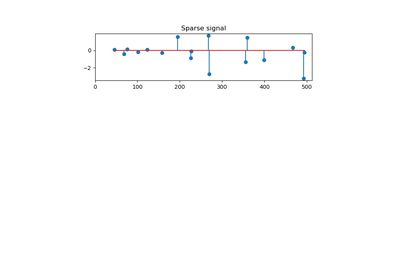sklearn.datasets.make_sparse_coded_signal¶
-
sklearn.datasets.make_sparse_coded_signal(n_samples, n_components, n_features, n_nonzero_coefs, random_state=None)[source]¶ Generate a signal as a sparse combination of dictionary elements.
Returns a matrix Y = DX, such as D is (n_features, n_components), X is (n_components, n_samples) and each column of X has exactly n_nonzero_coefs non-zero elements.
Read more in the User Guide.
Parameters: n_samples : int
number of samples to generate
n_components : int,
number of components in the dictionary
n_features : int
number of features of the dataset to generate
n_nonzero_coefs : int
number of active (non-zero) coefficients in each sample
random_state : int, RandomState instance or None, optional (default=None)
If int, random_state is the seed used by the random number generator; If RandomState instance, random_state is the random number generator; If None, the random number generator is the RandomState instance used by np.random.
Returns: data : array of shape [n_features, n_samples]
The encoded signal (Y).
dictionary : array of shape [n_features, n_components]
The dictionary with normalized components (D).
code : array of shape [n_components, n_samples]
The sparse code such that each column of this matrix has exactly n_nonzero_coefs non-zero items (X).


